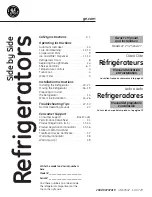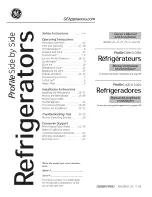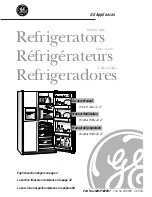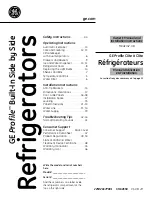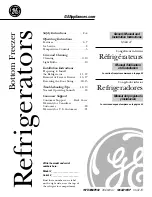
Cleaning before use
To remove the odour which is present in all
new appliances, wipe the interior with dilut-
ed vinegar prior to first use. Then wipe it out
with clean water and dry all of the parts off
afterwards.
Commissioning the appliance
WARNING
Risk of electric shock!
Touching live parts may result in severe
injury or death.
■
Do not operate or continue to oper-
ate the appliance, if
–
it shows visible signs of damage,
e.g. the power cord is defective,
–
starts smoking or there is a smell of
burning,
–
it makes unfamiliar noises.
In such cases, pull out the mains plug
or unscrew/isolate the fuse and con-
tact our service department (see
page EN-28).
■
Do not connect to a timer or a sepa-
rate remote-controlled system for dis-
tance monitoring and control.
■
If the mains plug is no longer acces-
sible after installation, an all-pole dis-
connecting device complying with
overvoltage category III must be
connected to the house wiring with a
contact gap of at least 3 mm; this in-
cludes fuses, circuit breakers and con-
tactors.
■
Do not kink or pinch the mains cord
or lay it over sharp edges. This can re-
sult in a break in the cable.
CAUTION
Fire hazard!
Improper handling of the appliance can
lead to fi re and damage to property.
■
Connect the appliance only to a
properly installed and earthed elec-
tric socket. Do not connect to a mul-
ti-socket extension cable or a mul-
ti-socket plug.
NOTICE
Risk of damage!
If the cooling unit has been transport-
ed horizontally, lubricant from the com-
pressor may get into the cooling circuit.
■
Allow the appliance to stand upright
for approx. 2 hours after transport
and before connecting. This allows
the lubricant enough time to fl ow
back into the compressor.
• Insert the mains plug into an easily acces-
sible and properly installed socket (220-
240 V~ / 50 Hz).
When opening and closing the upper door,
the fridge compartment’s interior lighting
(1) will automatically switch on and off.
You will find all important information
about operation from page EN-12.
Start-up
Page EN-26




















